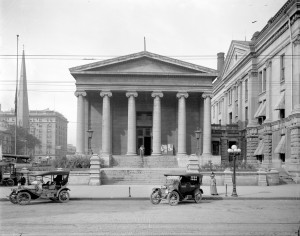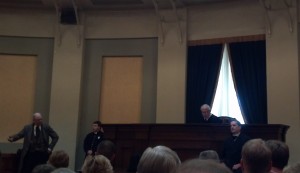The first time I heard about hauntings at Wright Patterson Air Force Base was several years ago, when I heard that The Atlantic Paranormal Society was coming to film an episode of Ghost Hunters. Supposedly, a couple of office and storage buildings on base are haunted, as well as the Hap Arnold House.
What I learned more recently, is that there’s a much more haunted place on base: the National Museum of the United States Air Force.
It shouldn’t be any surprise, considering how much death is associated with some of these aircraft and artifacts.
The more recent hauntings are from the Vietnam war, both of which were involved in rescue/medical evacuation missions. The Black Mariah is a Sikorsky CH-3E amphibious transport helicopter that saw many highly classified runs. The Black Mariah is riddled with bullet holes. Supposedly, many soldiers died aboard the Black Mariah, and their voices and moans can still be heard where it sits in the museum today. (Note: according to its Fact Sheet dated 12/2010, the Black Mariah is undergoing restoration and can only be seen as part of the museum’s Behind the Scenes tour.)
The Hopalong is a Sikorsky UH-19B Chickasaw that served as a medevac chopper in both the Vietnam war and in Korea. It’s also home to an apparition of its last pilot, who the museum’s night staff claim they sometimes see in the pilot’s seat, flipping switches and trying to steer the craft to safety. The seat is still stained with the pilot’s blood.
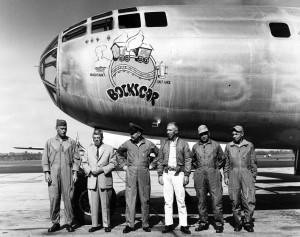
Bockscar, shown when it was delivered to the USAF Museum in 1961, with a group of its original crew. The nose art was added after the Nagasaki mission.
One of the museum’s more dramatic exhibits is the Bockscar, “the aircraft that ended WWII.” Named after its pilot, Frederick C. Bock, this Boeing B-29 bomber dropped the “Fat Man” atomic bomb on Nagasaki, Japan, which led to Japan’s surrender. Supposedly, people have seen the ghost of a young Japanese boy near the plane at night.
The Lady Be Good was a B-24D that disappeared after departing for a bombing mission over Italy on April 4, 1943. The other 24 bombers sent to Naples that day returned safely. But the Lady Be Good wasn’t found until sixteen years later, after a group of British archaeologists spotted wreckage while flying over the Libyan desert. After an intensive search of the area, remains of eight crew members were recovered, one of whom had trekked over 100 miles from the wreckage. The ninth crew member was never found. The aircraft was recovered in pieces, many of its instruments and equipment still in usable condition. Some of these parts were installed in other aircraft. According to the Lady Be Good fact sheet, a C-54 with autosyn transmitters from the Lady experienced propeller trouble; it managed to land safely only by ditching cargo. A C-47 with a radio receiver from the Lady had to be abandoned in the Mediterranean. An Army “Otter” plane got an armrest from the Lady Be Good, then crashed in the Gulf of Sidra. None of the ten men aboard were ever found. Some parts were, however – including the armrest. Now housed in the museum, the parts inexplicably rearrange themselves.
Another WWII-era B24D, the Strawberry Bitch is one of the museum’s more popular attractions. With a range of over 2,800 miles laden with 5,000 lbs. bomb load, the B24 was well-suited for longer range missions like the raid on the Ploesti oil fields in Rumania, which were estimated to supply 60 percent of Germany’s crude oil. Visitors and museum staff have reported hearing rattles and clanks from the undercage where the gunner sat, and some even claim to have seen a shadowy figure inside. Others say they’ve seen strange lights inside the aircraft. Whatever its/their nature, the spirit(s) haunting the Strawberry Bitch are the only ones said to be violent: a former janitor from the museum claims one slapped him in the face once. Who knows, maybe he made a comment about the plane’s pinup girl nose art. 😀

Prisoners of War exhibit at the National Museum of the United States Air Force
There’s one exhibit at the museum that isn’t an aircraft, but evokes a sense of dread and unease in more people than any other: the POW exhibit. With my skeptical nature, I’d be more inclined to believe this is simply due to knowing the horrible experiences suffered by our prisoners of war, rather than any paranormal activity. Still, it makes one wonder!
I have to admit, I didn’t see or hear any evidence of ghostly activity when I visited the museum. If you’ve been there, did you? Do you know of any haunted museums in your home town?
More at the My Town Monday blog



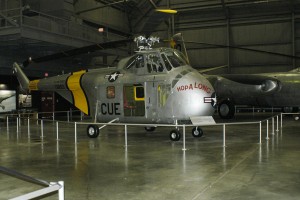
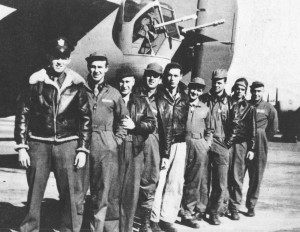


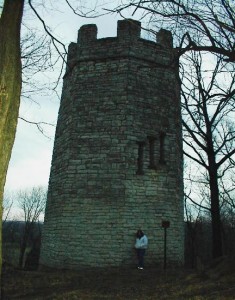
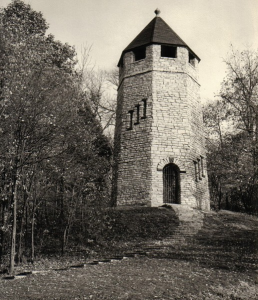
 This past weekend was
This past weekend was 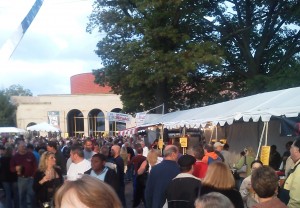
 It seems ebooks are getting all the press (virtual and otherwise!) lately. Ebooks and e-readers are all the rage – instant gratification! Large type, if you want! More choices! Tons of cheap and even free books! No restrictions on length, whether you’re reading a four-page flash fiction piece, or a tome to rival War and Peace. No e-reader? Read ’em on your phone or even your computer! What’s not to like?
It seems ebooks are getting all the press (virtual and otherwise!) lately. Ebooks and e-readers are all the rage – instant gratification! Large type, if you want! More choices! Tons of cheap and even free books! No restrictions on length, whether you’re reading a four-page flash fiction piece, or a tome to rival War and Peace. No e-reader? Read ’em on your phone or even your computer! What’s not to like?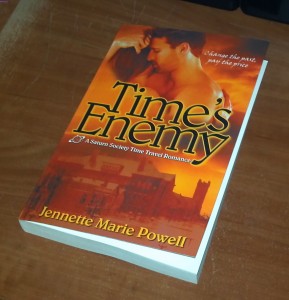
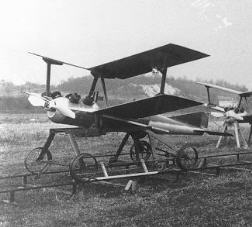
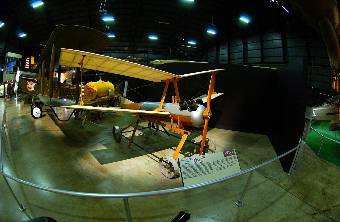

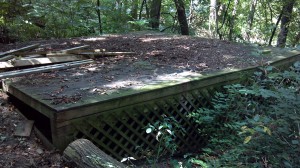 The trail winds up the hill and around the parking lot, close to South Dixie Drive. It then leads past the neighboring
The trail winds up the hill and around the parking lot, close to South Dixie Drive. It then leads past the neighboring  One of the fun things about writing (and reading) time travel stories is the whole fish-out-of-water aspect, especially when someone goes into the future. There is one scene in
One of the fun things about writing (and reading) time travel stories is the whole fish-out-of-water aspect, especially when someone goes into the future. There is one scene in 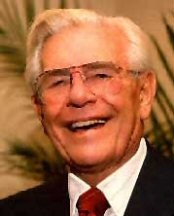

 On another note,
On another note, 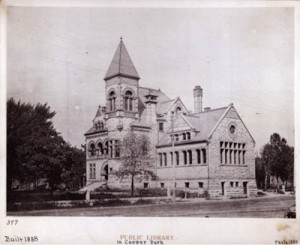 The precursor to
The precursor to 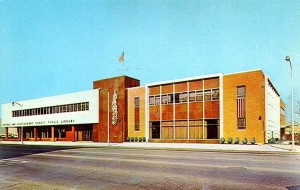 The library is once more outgrowing its downtown location, and
The library is once more outgrowing its downtown location, and 